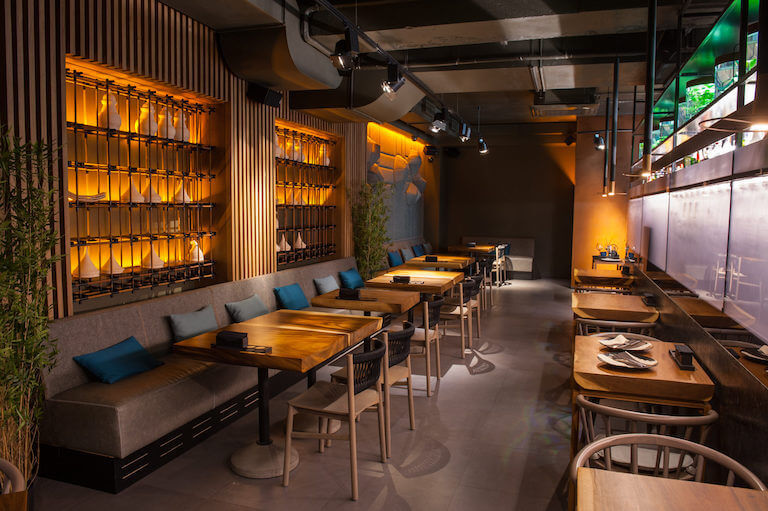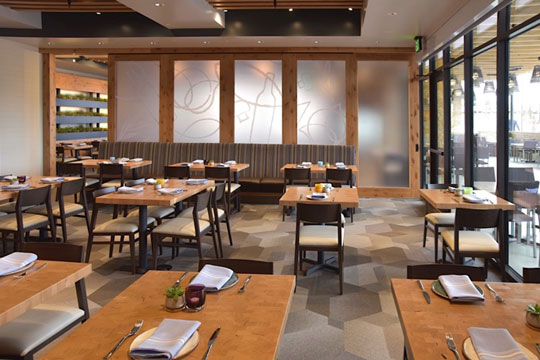Asian Fusion Restaurant: A Distinct Dining Experience in the Heart of Islamabad
Asian Fusion Restaurant: A Distinct Dining Experience in the Heart of Islamabad
Blog Article
Savor Authentic Asian Cuisine With a Pan-Asian Spin for a Culinary Adventure
Embarking on a cooking journey through authentic Eastern food, boosted with a Pan-Asian spin, uses a special possibility to check out the rich tapestry of flavors that specify the area's diverse cooking traditions. As you consider these tempting recipes, take into consideration the cultural narratives and historic impacts that shape them, each bite offering a story waiting to be found. asian fusion restaurant.

Discovering Pan-Asian Flavors
In the world of global gastronomy, Pan-Asian food attracts attention for its amazing variety and the unified interplay of tastes from different Asian cultures. This culinary strategy commemorates the rich customs and distinct components located throughout the continent, creating a tapestry of tastes that is both appealing and satisfying. Key to Pan-Asian cuisine is its ability to stabilize contrasting tastes-- pleasant, salty, spicy, and sour-- while highlighting the quality and high quality of each active ingredient.
From the umami-rich soy sauce of Japan to the intense chili peppers of Thailand, Pan-Asian food uses a substantial palette of tastes. These elements are commonly integrated in inventive means, boosting meals with layers of complexity. For circumstances, the use of fragrant natural herbs such as lemongrass and cilantro, usual in Vietnamese and Thai food, includes a refreshing brightness to dishes, while the incorporation of coconut milk provides a creamy, abundant structure.
The emphasis on fresh fruit and vegetables and aromatic flavors ensures that each dish is not just a feast for the palate yet also for the detects. Pan-Asian food welcomes restaurants to begin on a culinary trip, exploring the huge and differed landscapes of Asian gastronomy with every bite.
Fusion Dishes to Attempt
While Pan-Asian food is commemorated for its traditional flavors, the modern culinary landscape is significantly embracing blend meals that blend these classic elements with influences from various other regions. This cutting-edge approach not only honors the abundant heritage of Asian cookeries however also introduces novel taste experiences that interest contemporary tastes buds.
An archetype of such a combination dish is the Korean-Mexican taco, where marinated bulgogi beef is wrapped in a cozy tortilla, covered with kimchi and a zesty gochujang-infused salsa. This mix marries the strong, tasty tastes of Korea with the dynamic, fresh elements of Mexican cuisine. Likewise, sushi burritos have actually gained popularity, amalgamating the fragile artistry of Japanese sushi with the passionate, hand-held convenience of a burrito, usually featuring fusion ingredients like tempura shrimp and avocado with a drizzle of wasabi mayo.
An additional significant dish is Thai curry ramen, which instills the creamy, fragrant seasonings of Thai curry into the reassuring brew of standard Japanese ramen, producing a harmonious blend that entices the senses. These fusion dishes expand past simple uniqueness; they stand for a cooking discussion between societies, motivating expedition and advancement in the globe of Pan-Asian food.
Vital Active Ingredients and Spices
To truly value Pan-Asian food, one have to recognize the crucial components and seasonings that develop its structure. This diverse cooking style draws from a rich tapestry of Oriental customs, utilizing an unified mix of flavors and structures. Key ingredients consist of soy sauce, fish sauce, and oyster sauce, which give a tasty umami deepness vital to Eastern meals. Corresponding to these are rice vinegar and mirin, providing a fragile level of acidity and sweetness.
Fragrant components are critical, with lemongrass, garlic, and ginger being common throughout numerous Pan-Asian recipes. These components give a fragrant base that improves the intricacy of flavors. Seasonings such as celebrity anise, cardamom, and cinnamon introduce heat and character, resembling influences from areas like China and India.

Cooking Strategies and Tips
Mastering the art of Pan-Asian food requires familiarity with its distinct food preparation strategies, each adding to the vibrant tapestry of tastes this culinary tradition is commemorated for. Central to these techniques is the stir-fry, a rapid cooking strategy that preserves the dietary integrity and vivid shades of components. Using useful source a frying pan, the stir-fry approach allows for even warm distribution, crucial for achieving the particular appearance and taste equilibrium of Pan-Asian recipes.
An additional essential method is steaming, especially common in Chinese cuisine. This mild approach keeps the all-natural flavors and nutrients of components, making it ideal for fish and shellfish and veggies. Dumplings, a beloved staple, usually take advantage of steaming, leading to soft, succulent textures.
Grilling, additionally essential, imparts great smoky depths to recipes such as Oriental bulgogi or Japanese yakitori (Instagrammable restaurants Islamabad). This strategy typically entails marinading components, allowing tastes to permeate deeply before cooking over an open flame or warmer
Lastly, understanding the art of stabilizing tastes-- sweet, sour, salted, bitter, and umami-- is important. Appropriately layering these elements can raise a dish from regular to amazing, providing a complex and satisfying culinary experience that personifies the significance of Pan-Asian food.
Eating Experiences Worldwide
Across the world, Pan-Asian food uses an unparalleled eating experience, celebrated for its abundant tapestry of flavors and lively presentations. This cooking sensation has gone beyond social limits, recording the hearts and palates of food lovers worldwide. In cosmopolitan cities fresh York, London, and Sydney, Pan-Asian restaurants work as fusions where culinary traditions from Thailand, Japan, China, and beyond merge, providing restaurants with a diverse mix of recipes that highlight the region's diversity.
The worldwide appeal of Pan-Asian cuisine lies in its capability to supply both credibility and innovation. Cooks skillfully wed traditional ingredients such as lemongrass, soy sauce, and miso with modern methods, causing meals that are both familiar and refreshingly new. This fusion allows diners to begin on a more cooking journey that appreciates heritage while accepting modernity.
Furthermore, dining experiences are elevated through attentively designed environments that reflect the principles of Pan-Asian aesthetic appeals. From minimalist Japanese-inspired interiors to dynamic Thai-themed areas, each dining establishment provides an one-of-a-kind atmosphere that matches the culinary offerings. Therefore, customers are not simply eating a meal but partaking in a cultural experience, making Pan-Asian dining a truly worldwide phenomenon.
Conclusion
The expedition of Pan-Asian food supplies a profound understanding click here for more info of the elaborate interplay of tastes and cooking customs across Asia. By accepting blend dishes such as Thai curry ramen and sushi burritos, the cooking trip not only highlights the versatility of typical ingredients but likewise showcases ingenious contemporary techniques. This gastronomic journey, enhanced by cooking methods and vital flavors, provides an one-of-a-kind chance to value the social diversity and cooking creativity that define Pan-Asian cuisine on a global scale.
Getting started on a culinary trip via authentic Oriental cuisine, enhanced with a Pan-Asian spin, uses an one-of-a-kind possibility to check out the rich tapestry of tastes that specify the area's diverse culinary practices.In the world of international gastronomy, Pan-Asian food stands out for its amazing variety and the unified interaction of flavors from different Eastern cultures. Trick to Pan-Asian cuisine is its capability to balance different tastes-- sweet, salty, spicy, and sour-- while highlighting the freshness and quality of each active ingredient.

Report this page